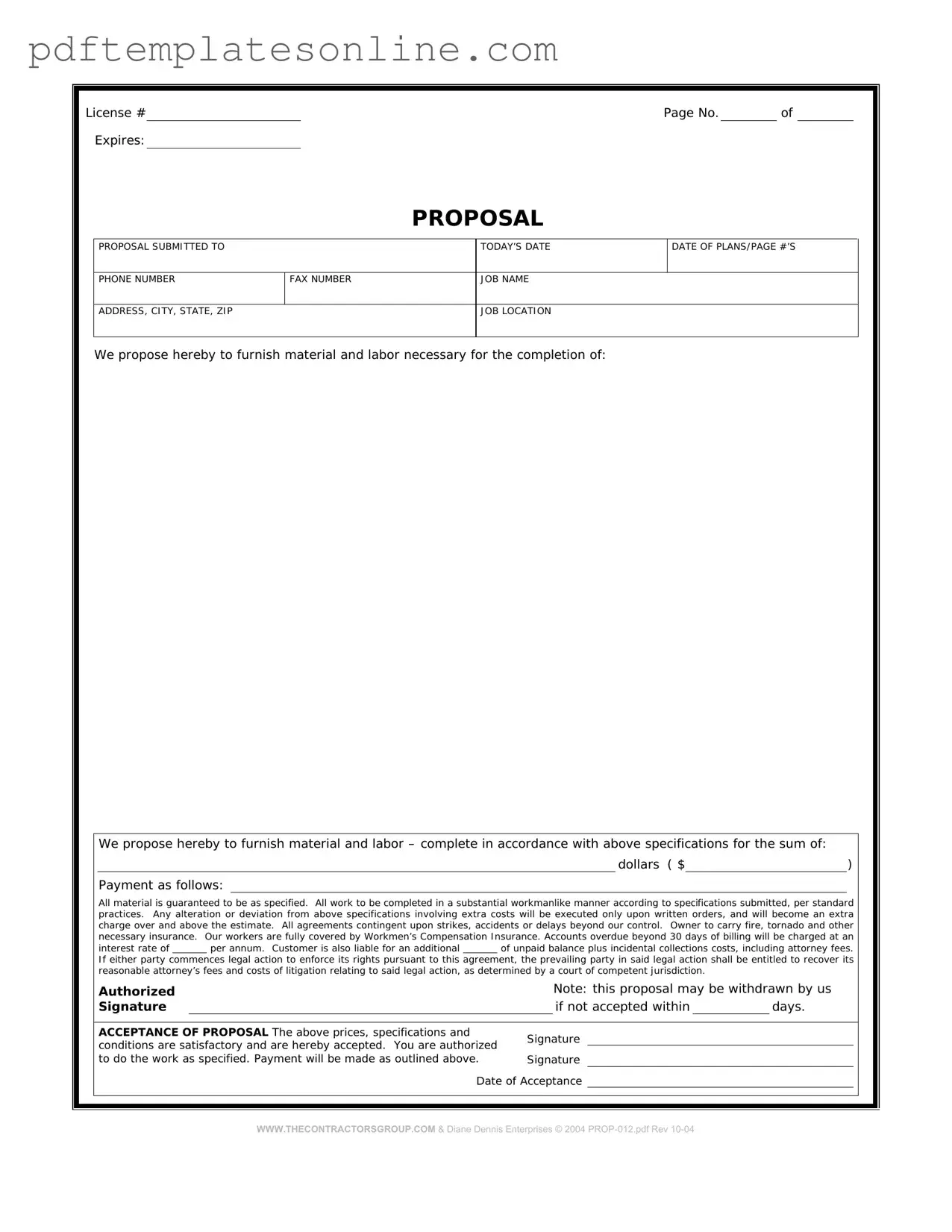Filling out a construction proposal form can be a straightforward process, but many people make common mistakes that can lead to delays or misunderstandings. One frequent error is not providing complete contact information. It's essential to include all relevant details, such as phone numbers and email addresses, to ensure clear communication throughout the project.
Another common mistake is overlooking project details. A vague description can lead to confusion. Be specific about the scope of work, including materials and timelines. This clarity helps both parties understand expectations and reduces the risk of disputes later on.
People often forget to include pricing information. It's crucial to provide a detailed breakdown of costs, including labor, materials, and any additional fees. This transparency helps clients understand where their money is going and can prevent misunderstandings about budget expectations.
Additionally, some individuals neglect to sign the proposal. A signature indicates agreement to the terms outlined in the document. Without it, the proposal may not be considered valid, leading to potential complications in moving forward with the project.
Another mistake is failing to review the proposal for errors before submission. Typos and incorrect figures can undermine professionalism and create unnecessary confusion. Taking a moment to double-check the form can save time and hassle later.
People sometimes also forget to attach necessary documentation. Supporting documents, such as licenses or insurance certificates, may be required. Ensure that all relevant paperwork accompanies the proposal to avoid delays in the approval process.
Some individuals do not follow the specific instructions provided with the proposal form. Each construction project may have unique requirements, and adhering to them is vital. Ignoring these instructions can lead to rejection of the proposal.
Another common oversight is not considering the timeline for the project. Including estimated start and completion dates is important for setting expectations. Clients appreciate knowing when to expect progress and completion.
Finally, many people fail to ask questions if they are unsure about any part of the proposal. Clarifying doubts can prevent misunderstandings and ensure that all parties are on the same page. Open communication is key to a successful construction project.
